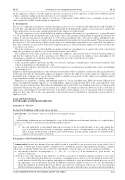Page 629 - SAIT Compendium 2016 Volume2
P. 629
IN 72 Income Tax acT: InTeRPReTaTIon noTes IN 72
by the employer to dispose of to the employee then the cost thereof or if the employer is in the motor industry and the vehicle constitutes trading stock then the lower of cost or market value.
Any consideration paid by the employee for the use of that motor vehicle whilst it was a company car may not be offset against the taxable bene t arising on acquisition.
5. Conclusion
The use of a company car for private or domestic purposes gives rise to a taxable bene t under the Seventh Schedule of the Act. The cash equivalent of the taxable bene t which must be included in the employee’s gross income is equal to the value of the private use less any consideration paid by the employee for that bene t.
The value of private use of a vehicle held by an employer otherwise than under an ‘operating lease’ is generally equal to 3,5% per month of the determined value of the motor vehicle. The amount calculated must be apportioned if the motor vehicle is only used for part of a month (that is, 3,5% of the determined value of the motor vehicle multiplied by the number days of use of the motor vehicle in the month divided by the number of days in the month). The percentage may be reduced to 3,25% if the motor vehicle was the subject of a maintenance plan when it was acquired by the employer. The value of private use may not be reduced for temporary absences such as when the employee is away on work or the car is in for a car service.
The value of private use of a vehicle held by an employer under an ‘operating lease’ is equal to the actual cost incurred under the operating lease plus the cost of fuel incurred on the same vehicle.
The calculation of the value of private use assumes the employee only uses the motor vehicle for private purposes and that the employer bears all the operating costs. However, on assessment an employee may, depending on the circumstances, qualify for a reduction in the value of private use to the extent the motor vehicle:
• is used for business purposes;
• to the extent the employee has borne the full costs of licence, insurance or maintenance (reduction not available if the
vehicle is held under an operating lease); and
• to the extent the employee has borne the cost of fuel for private use (reduction not available if the vehicle is held under
an operating lease).
Employees must maintain detailed records of business travel if they wish to claim these reductions, this is generally done in the form of a logbook. Special rules apply to an employee who has the right of use of more than one company car, and potentially, if the company car is a pool vehicle available to employees in general, or if the employee is regularly required to perform duties outside of normal of ce hours.
Employers are required to calculate and withhold employees’ tax on a monthly basis. With effect from 1 March 2011 when calculating the monthly employees’ tax withholdings, employers must include 80% of the cash equivalent of the taxable bene t as remuneration. This reduced withholding (previously 100% was included) takes into account potential reductions which may take place on assessment, for example, the business reduction. However, in the event that an employer is satis ed that at least 80% of the use of the motor vehicle during a year of assessment will be for business purposes, then only 20% of the cash equivalent of the taxable bene t is included as remuneration and is subject to employees’ tax.
Legal and Policy Division
SOUTH AFRICAN REVENUE SERVICE
Annexure A – The law
Section 1(1) De nition of the term “gross income”
Paragraph 1 of the Fourth Schedule
‘gross income’, in relation to any year or period of assessment, means— (i) ...
(ii) ....
....but including, without in any way limiting the scope of this de nition, such amounts (whether of a capital nature or not) so received or accrued as are described hereunder, namely—
(a) – (h)....
(i) the cash equivalent, as determined under the provisions of the Seventh Schedule, of the value during the year of assessment of any bene t or advantage granted in respect of employment or to the holder of any of ce, being a taxable bene t as de ned in the said Schedule, and any amount required to be included in the taxpayer’s income under section 8A;
‘remuneration’ means any amount of income which is paid or is payable to any person by way of any salary, leave pay, wage, overtime pay, bonus, gratuity, commission, fee, emolument, pension, superannuation allowance, retiring allowance or stipend, whether in cash or otherwise and whether or not in respect of services rendered, including— (a) any amount referred to in paragraph (a), (c), (cA), (d), (e), (eA) or (f) of the de nition of “gross income” in
section 1 of this Act;
(cA)80 per cent of the amount of any allowance or advance in respect of transport expenses referred to in section
8 (1) (b), other than any such allowance or advance contemplated in section 8 (1) (b) (iii) which is based on the actual distance travelled by the recipient, and which is calculated at a rate per kilometre which does not exceed the appropriate rate per kilometre xed by the Minister of Finance under section 8 (1) (b) (iii): Provided that where the employer is satis ed that at least 80 per cent of the use of the motor vehicle for a year of assessment will be for business purposes, then only 20 per cent of the amount of such allowance or advance must be included;
saIT comPendIum oF Tax LegIsLaTIon VoLume 2 621


